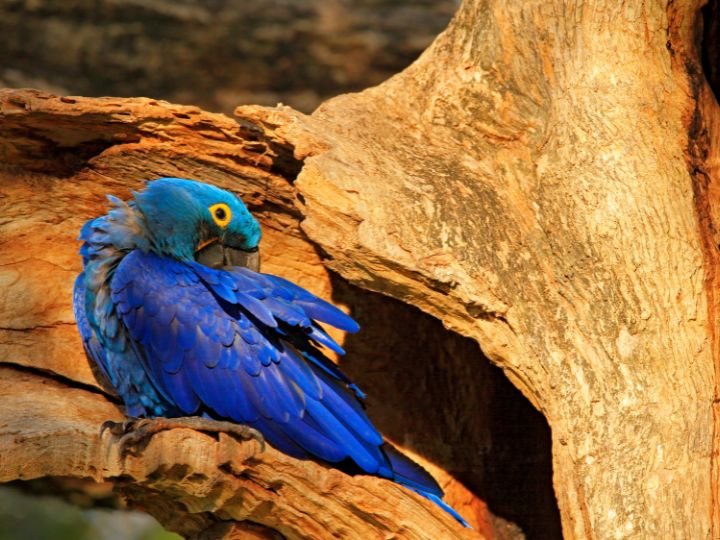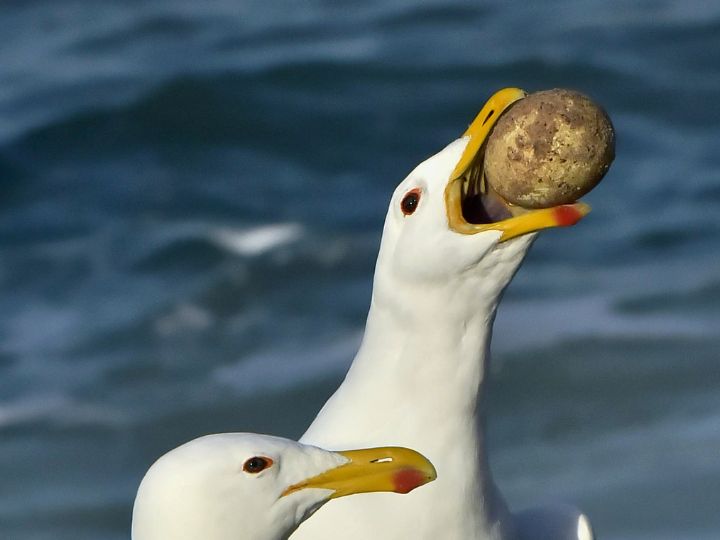Bird eggs are a valuable source of nutrition for many animals, providing them with essential proteins and fats for their survival. Across various ecosystems, there exists a myriad of creatures that specialize in snacking on these delicate and often well-hidden treats. Understanding the role these egg predators play in the natural world is crucial in preserving the delicate balance of various ecosystems.
Ovivorous animals, also known as egg predators, have evolved to feed exclusively on eggs. These animals cover a diverse range of species, from mammals and birds to reptiles. Some well-known examples include raccoons, snakes, and blue jays. These creatures employ various tactics to locate and consume bird eggs, with many being skilled in navigating the tree canopies or ground nests that house these avian treasures.
Egg predation showcases the complexity of ecological relationships, demonstrating the intricate predator-prey dynamics within different environments. By studying the interactions between birds and their egg predators, we can learn more about the factors that influence species survival, population growth, and overall biodiversity.
Types of Egg Predators
Mammals
Various mammals are known to prey on bird eggs. Some common examples include:
- Foxes: These opportunistic predators will sometimes target bird nests for a quick snack.
- Squirrels: They are notorious for raiding nests and consuming not only eggs but also chicks.
- Opossums: These nocturnal creatures may snatch bird eggs during their nightly foraging.
- Badgers: Despite their preference for burrowing insects, they will occasionally target bird nests.
Birds
Several bird species are egg predators, such as:
- Crows: These highly intelligent birds have been known to use tools to access eggs in nests.
- Blue Jays: These birds can mimic hawk calls, scaring away adult birds to steal their eggs.
- Magpies: Being part of the Corvid family, they also have a reputation for stealing bird eggs.
- Ravens: Similar to crows, these clever birds are known to prey on other bird species’ eggs.
Reptiles
Reptiles can also be egg predators, including:
- Snakes: Many snake species consume bird eggs, such as rat snakes, black snakes, and gopher snakes.
- Lizards: Some larger lizards, like monitor lizards, can climb trees to raid nests and consume eggs.
Insects
Certain insects also target bird eggs, although they mainly threaten smaller bird species. Examples include:
- Ants: Swarm behaviour can enable certain ant species to overwhelm small nests.
- Wasps: Some wasp species like the greater banded hornet may attempt to steal bird eggs.
Invertebrates
Lastly, several invertebrates can consume bird eggs as well:
- Slugs: Some slugs are known to feed on bird eggs, albeit usually only the ones that have fallen from nests.
- Centipedes: Large centipedes like the giant tropical centipede may consume very small bird eggs.
Eggs at Risk: Different Scenarios
Many animals prey on bird eggs, posing risks to the survival of various bird species. The following sections discuss the different scenarios and types of animals that target bird eggs, both from ground-nesting and tree-nesting birds.
Ground-Nesting Birds
Ground-nesting birds, such as shorebirds and some waterfowl, are particularly vulnerable to egg predators. In these circumstances, common egg-eaters include:
- Squirrels: These opportunistic feeders will eat bird eggs if they come across them on the ground.
- Foxes: Known to dig up nests and eat eggs of ground-nesting birds.
- Badgers: Also known to dig up nests and eat eggs, particularly during breeding season.
- Pigs: Domesticated and wild pigs may consume bird eggs when they find them while foraging.
Ground-nesting birds can also suffer from humans and their activities, such as farming and development, which can inadvertently destroy nests and eggs.
Tree-Nesting Birds
Birds that nest in trees face different challenges, even though they seem safer from predators. Some of the animals that prey on tree-nesting bird eggs include:
- Raccoons: These versatile predators are known to climb trees and raid nests for eggs.
- Opossums: Like raccoons, they are also skilled climbers that target bird eggs in tree nests.
- Snakes: Some species are excellent climbers and can reach bird nests in trees to consume eggs.
- Pine martens and polecats: They typically carry the eggs off to eat elsewhere, leaving behind characteristic oblong or rectangular holes in the shell.
Both ground-nesting and tree-nesting birds are at risk of losing their eggs to various predators, which can impact their populations and the overall ecosystem.
Adaptations for Egg Protection
Camouflage
One way birds protect their eggs is through camouflage. Many bird species lay eggs that blend in with the surrounding environment, making it difficult for predators to spot them. This can involve various colors, patterns, and shapes to help the eggs blend in with the nesting material or the natural substrate where the nest is located.
Nest Design
Another adaptation for egg protection is the use of a strategic nest design. Birds have evolved a variety of nest designs to keep their eggs safe from predators, with some being simplistic and others quite intricate. For example:
- Cavity nests: Some birds, like woodpeckers, create nests inside tree cavities, not only providing shelter but also hiding the eggs from potential predators.

Image Credit: Canva
- Cup nests: This type of nest, where birds build small, bowl-shaped nests lined with soft materials, can be built on the ground, in trees, or on man-made structures, like ledges or poles, providing a variety of protection depending on the location.
- Dome nests: These enclosed nests, built by some species like wrens andovenbirds, consist of a roof or dome that helps shield the eggs from predators and weather.
Parental Behavior
Parental behavior also plays a crucial role in protecting bird eggs. Some examples of parental behaviors that help protect the eggs include:
- Incubation: Many bird species have one or both parents sitting on the eggs during incubation, physically shielding them from potential predators.

Image Credit: Canva
- Aggressive defense: Some birds, like gulls or swans, will aggressively defend their eggs and nest area, even attacking larger animals that come too close.
- Distraction displays: In an effort to protect their eggs, some birds will pretend to be injured or approach a predator in a way that distracts it, ultimately leading the predator away from the nest.
- Nest sanitation: Parents will remove eggshells, feces, and other debris from the nest to minimize odor and the chance of attracting predators.
Impacts on Bird Populations
The consumption of bird eggs by various predator species can greatly impact bird populations, leading to declines in some cases. Generalist predators, such as raccoons, foxes, skunks, opossums, squirrels, rat snakes, crows, blue jays, and grackles, are known to operate well in fragmented habitats and often consume bird eggs, young birds, and even adult birds. Furthermore, population increases among predators like buzzards, badgers, carrion crows, pine martens, ravens, and red foxes have contributed to the decline of several ground-nesting bird species.
In addition to mammals and birds, reptiles also pose a significant threat to bird populations. Snakes are known to climb trees and raid nests, while lizards can catch birds during their flights. Human activity, such as feeding garden birds, can unintentionally contribute to the decline in some bird species. For instance, the marsh tit population may be affected due to the “boosting” of competitor species from feeding.
It is essential to consider the potential consequences of altering natural ecosystems and consider ways to minimize the impact of predators on bird populations. One approach is to implement habitat conservation efforts that focus on preserving nesting sites and providing suitable environments for vulnerable bird species to thrive. By better understanding the relationship between predators, their prey, and the overall ecosystem, we can work towards a more balanced environment where all species can coexist.
Frequently Asked Questions
Becky is a fervent wildlife enthusiast and pet care expert with a diploma in canine nutrition. Her love for animals stretches beyond the domestic, embracing the wild tapestry of global fauna. With over a decade of experience in animal welfare, Becky lends her expertise to OutlandishOwl through insightful articles, captivating wildlife information, and invaluable guidance on pet nutrition. Her work embodies a deep commitment to understanding the intricate lives of animals and a passion for educating others on sustaining natural habitats. Becky's hands-on conservation efforts and her knack for translating complex dietary science into practical pet feeding tips make her an indispensable voice for creatures great and small.




